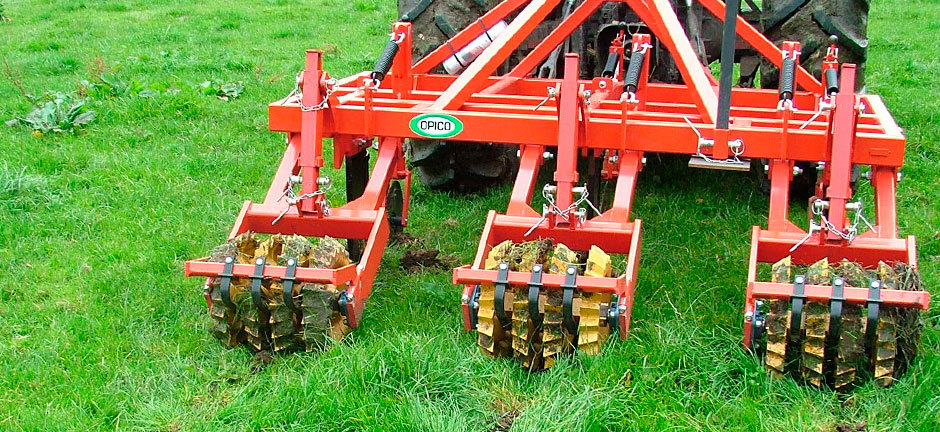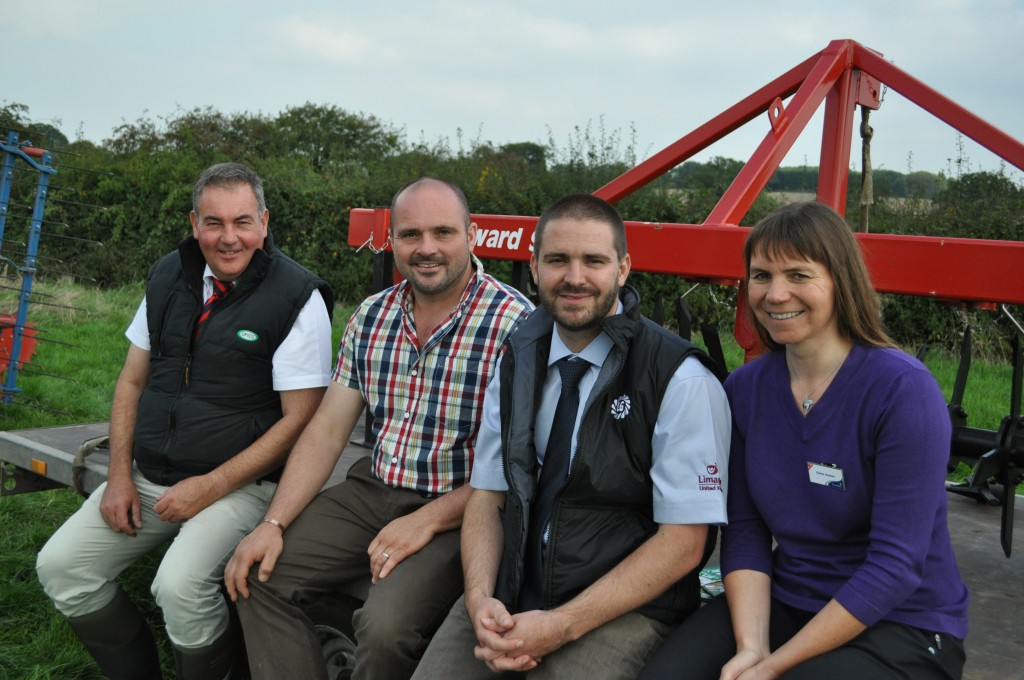





Getting more from grassland
The quantity and quality of grass that is grown on a farm has a direct and positive impact on the profitability of the livestock enterprise.
But maximising grassland productivity is not just a case of re-seeding, or spreading more fertiliser. Instead, it requires an integrated approach because sward performance is determined by many factors: soil structure and condition, soil nutrient levels, re-seeding frequency and method, choice of seed mixture, and the appropriate and timely application of fertilisers and herbicides.
With all these inter-related factors to consider, are you sure you are getting the most from your grassland? Or is there scope for improvement?
The Grassright approach
Limagrain UK, and OPICO have pooled their expertise to form the Grassright Group, to show farmers how to take a more integrated ‘best practice’ approach to managing grassland and boosting its productivity.
As well as the technical information and advice that can be found on this website, the Grassright Group holds seminars and open days, and has published a variety of advisory literature and tools (see Publications).
We have also been working with a small number of farmers on grassland improvement projects. Details of the advice we give, and results from the specific activities undertaken, can be found on this website and in the farming press.
 Grassland Management Calendar
Grassland Management Calendar
Every month the Grassright Group experts give their advice on what you need to be doing to improve your grassland…
Spring grazing and silage yields are adversely affected by winter grazing with the length of time grazed over the colder months being correlated to the drop in yield. For this reason fields required for early spring production should ideally be shut off by December and not grazed over the rest of the winter.
Much can be done to reduce the impact of adverse winter weather on grass growth. Minimising wheeled traffic and controlling winter grazing can reduce damage to the sward and reduce compaction. Modern varieties are selected for improved winter hardiness but even they may not escape some damage during the harshest winters. To reduce the likelihood of winter kill, swards should be no more than 3-4cm in height going into the winter.
If you are carrying out autumn reseeding, nitrogen is not normally needed, except in low SNS situations. However, make sure the soil test is up-to-date, apply lime if needed and ensure P and K are applied according to the soil index. Any P and K can be deducted from the following season's requirement. In most parts of the country August is the latest month in the year that you can safely sow Lucerne and Red Clover as both these species require warm soil temperatures to germinate. Lucerne is well worth thinking about, particularly if we experience the drought in spring and early summer that seem to have become an annual feature. However Lucerne does require relatively light and free draining soils and should always be sown with an inoculant, either pre-inoculated with Dormal or added to the seed at the point of drilling, such as Hi-stick. August is also a good time to drill pelleted white clover such as Cloverplus in to existing grass leys where clover may have been taken out by herbicide use. Ensure the sward is cut or grazed low and is relatively open and then the seed should be in contact with soil and moisture.
The correct time to sward-lift or slit will depend more on the ground conditions and weather forecast, than a specific date on the calendar. However, it is certainly worth planning ahead and going out with a spade to assess what will need to be done, either now or later.
Having dug out a soil sod to look for compaction, it's also a good opportunity to assess the types of grasses that are in it. By separating out each plant and placing into piles according to the different grass types, the percentage of good quality grasses present can be calculated.
Where there are good levels of productive grasses, but the ley is underperforming, production can be boosted by rejuvenating/renovating the sward by overseeding with an OPICO harrow and seeder, without going to the lengths of a complete reseed.
In soil assessments carried out over recent months there have been high levels of soil compaction. Alarmingly, this year there is also a high level of leatherjackets (the larvae of the crane fly) – not only are they greater in number, they are also bigger in size for the time of year.
The eggs from the adult crane fly (300 eggs per adult) are laid between June and September in grassland and will hatch into larvae within two to three weeks. These enter the sward and start feeding on the grasses thus stealing yield. Where leatherjacket populations are higher than usual, consult with your agronomist who can advise what to spray to control them.
In most parts of the UK, May is the big month for first cut silage. To achieve the highest ME you must cut early; this is especially desirable for dairy cows, whereas for dry stock and beef cattle higher dry matter yields and a slightly lower D value might be acceptable. Grazing paddocks should not be allowed to get too strong. In May grass is often in surplus, so if you don't have enough stock to keep on top of it, take some grass out of the grazing block for silage, so that the remaining grazing areas are of high palatability and digestibility to maintain animal performance.
Now is a good time to harrow all grass leys. Harrowing will remove trash, improve air to roots and stimulate grass growth. Soil temperatures are now suitable for seeding to take place. If overseeding, make sure leys have been grazed tightly or cut to reduce competition from the existing sward. Harrowing prior to seeding can help create a tilth for the new seed and is essential in denser swards to achieve good seed to soil contact. Use seed treated with a bio-stimulant such as Headstart to help establishment. Whether it's a full reseed or overseed, rolling is essential. Inspect fields for weed, and choose appropriate herbicide. Only apply when weeds are actively growing. Apply sulphur to second cut swards at 40 kg SO3/ha; potash is likely to be needed on silage aftermaths unless slurry has been applied. Grazing swards will benefit from some sulphur too.






